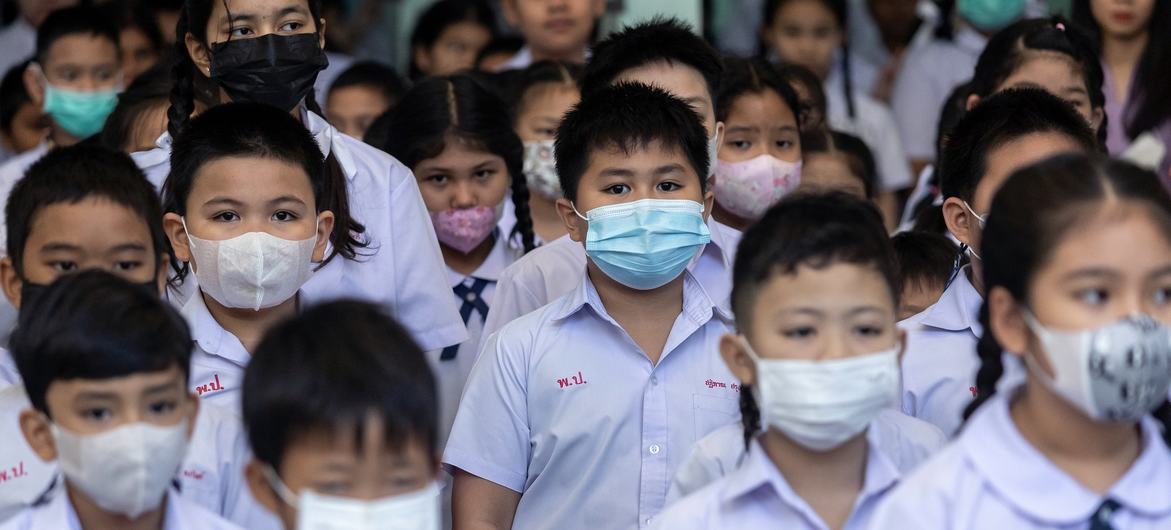The analysis underscores the devastating impact of toxic air on young lives, with air pollution now linked to nearly one in four deaths of under fives in the region.
Students at a primary school in Bangkok wear masks during their morning lineup as air pollution levels soar.
Urgent call for action
In response to the “silent killer,” UNICEF called on governments, businesses, healthcare professionals, parents, and educators to take immediate steps to reduce air pollution and protect children’s health.
Governments must enforce stronger environmental policies, transition to clean energy sources, and implement air quality standards aligned with WHO guidelines, alongside, businesses should adopt cleaner technologies, reduce emissions, and ensure their practices prioritize child safety.
Parents and educators also have a crucial role in raising awareness, advocating for cleaner environments, and empowering young people to take action, UNICEF highlighted.
Solutions exist
Furthermore, UNICEF is collaborating with governments, businesses, and communities on multiple initiatives to reduce children’s exposure to air pollution.
These include pushing for stronger environmental regulations, improving air quality monitoring by installing affordable sensors and implementing programmes to reduce household air pollution, such as cleaner cooking stoves and better ventilation.
The agency is also working to strengthen healthcare systems to better diagnose and treat pollution-related illnesses and is supporting young people to become clean air advocates, raising awareness, and pushing for stronger policies.
“Addressing air pollution will lead to enormous improvements in children’s health, education, and well-being, with ripple effects across entire societies and economies,” Ms. Kunugi underscored.
“Solutions exist, and our collective future depends on implementing them.”





























